Meet Our Pets
At our Zen Habitats office, we’re lucky enough to work alongside a variety of wonderful pets that are uniquely themselves with their own personalities. They live in our Reptile Room that was designed to offer the space, environment, and, of course, enclosures, that allow each of them to thrive, grow and entertain us every day
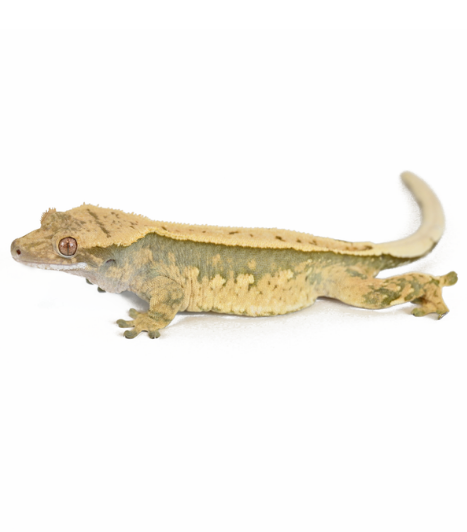
Bert
BeginnerBert is a lazy little girl, always maxing and relaxing! Of course, she lives right next door to her buddy Ernie!
Jan 2020
Crested Gecko (Correlophus ciliatus)
Southern New Caledonia (rainforest canopies)
They are sometimes referred to as eyelash geckos because of the appearance of their eyes. They can drop their tails in defense but do not grow them back like Leopard Geckos.
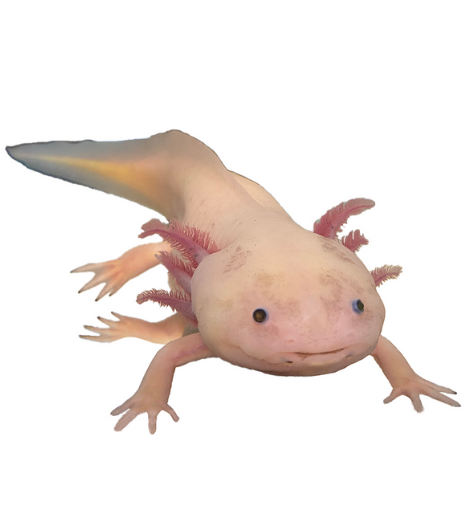
Butters
AdvancedBold little Butters swims around and watches whatever we're doing. With that little smile, he is more than adorable!
Feb 2020
Axolotl (Ambystoma mexicanum)
lakes of Xochimilco near Mexico City
They are extremely endangered in the wild, but domestic populations are plentiful. If injured, they regenerate organs and limbs – including parts of the spine and brain.
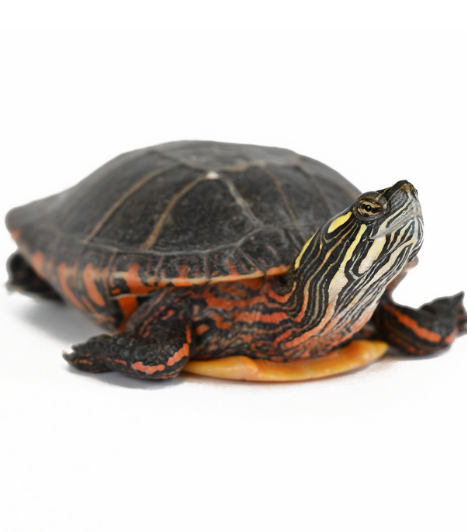
Charli
IntermediateCharli loves eating and is extremely food motivated. She loves to see everything that’s going on around her. Maybe that’s why she’s especially happy observing us during all of our meetings from her spacious aquarium.
Aug 2005
Painted Turtle (Chrysemys picta)
North America, from southern Canada to northern Mexico
The Painted Turtle is the most widespread turtle in North America. It is common to see 50 or more of these social turtles relaxing on the same log.
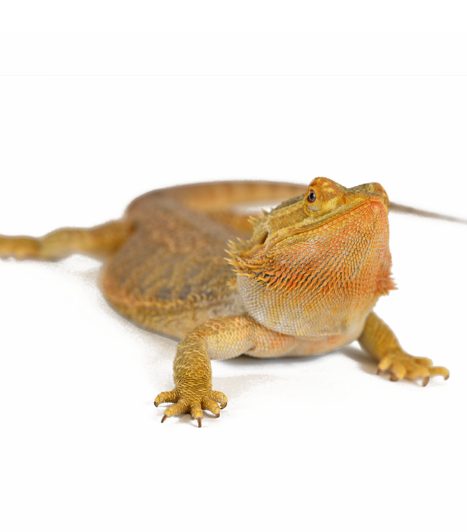
Chi
Beginner/IntermediateChi is the boy that started it all! He was the inspiration for Randy and Heidi to build a healthier and more stimulating enclosure than what was on the market before they began Zen Habitats. In fact, he’s featured in our logo! He’s a docile boy that loves to chill and snuggle, especially with Randy!
Aug 2016
Bearded Dragon (Pogona vitticeps)
inland Australia (arid, rocky, semi-desert regions and the arid open woodlands)
Named bearded because of the extension of skin on their throats. They can puff out the skin and turn it black when they are feeling territorial or excited for some other reason.
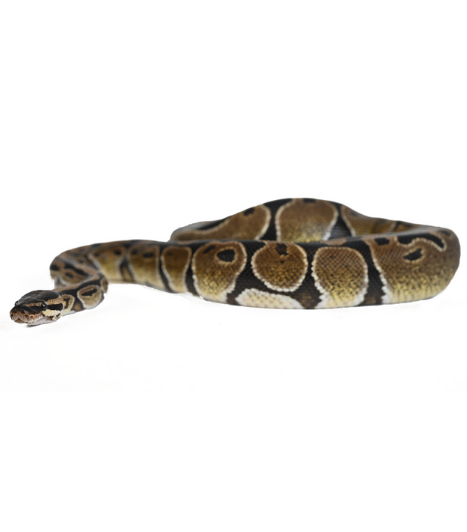
Chip
BeginnerChip is very docile and easy to love, especially with his bonded human, Heidi! He is very good at letting us know when it’s time to eat!
Jan 2019
Ball Python (Python regius)
sub-Saharan Africa (grasslands, shrublands, and open forests)
They are amazingly docile snakes. The oldest reported Ball Python in captivity was 62 years old.
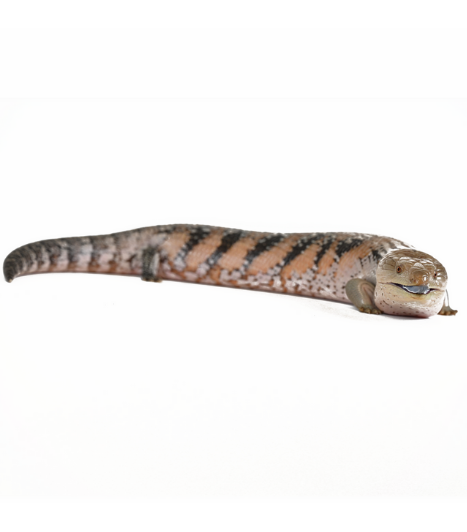
Cleo
IntermediateCleo is so much fun to watch and being watched is what she prefers. She’s been known to throw a temper tantrum when we pick up this sausage-shaped lovebug!
Feb 2020
Blue-tongued Skink (Tiliqua scincoides intermedia)
northern Australia (semi-desert, brush steppes)
They have the most beautiful, blue-colored tongues.
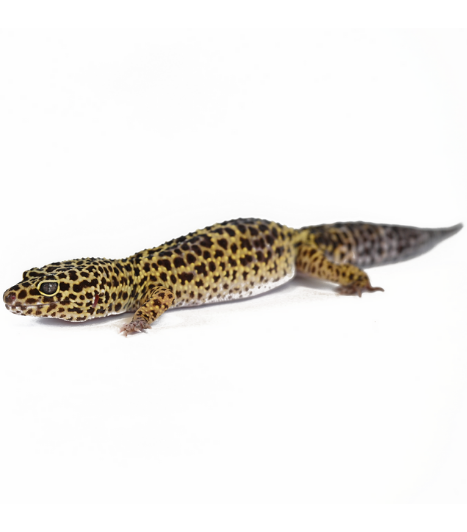
Eddie
BeginnerEddie might have a Napoleon complex; she’s very confident but can be skittish. However, in our eyes she is larger than life!
Mar 2020
Leopard Gecko (Eublepharis macularius)
Asia and the Middle East (arid, mountainous deserts)
They get their name from the leopard-like patterns they display. They have a defense mechanism where they can drop their tail and grow a new one.
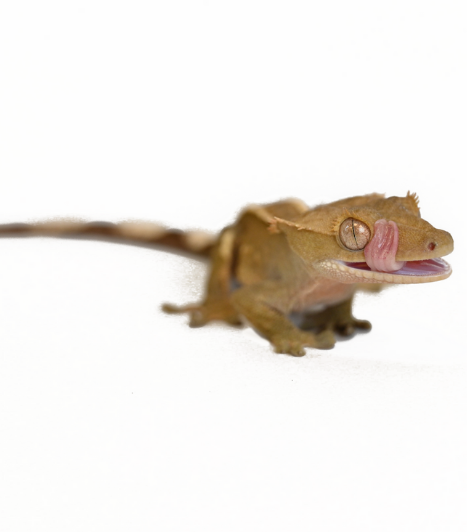
Ernie
BeginnerErnie is much different from his buddy, Bert. He thinks he’s an alpha male in everything he does. His attitude extends to mealtime as he is extremely food motivated!
Jun 2020
Crested Gecko (Correlophus ciliatus)
southern New Caledonia (rainforest canopies)
They are sometimes referred to as eyelash geckos because of the appearance of their eyes. They can drop their tails in defense but do not grow them back like Leopard Geckos.
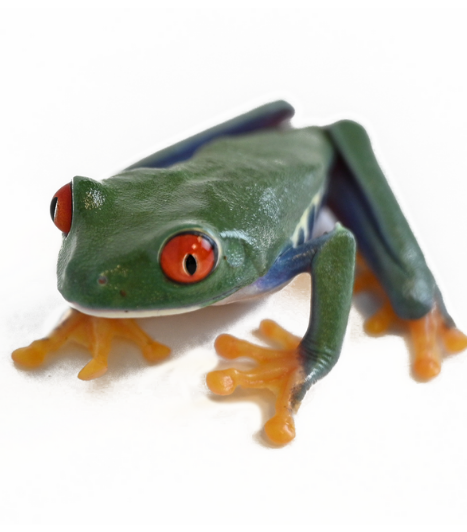
Froggos
IntermediateAs the dynamic trio we call Froggos, they are pretty much sleeping all day and look like little green stickers. We wonder what kind of mischief they’re getting into all night while we’re away!
Mar 2021
Red-eyed Tree Frog (Agalychnis callidryas)
southern Mexico, Central America, and northern South America
When sleeping, they tuck their colorful limbs beneath them, so they look like a bubble of green that blends into the leaves where they rest. A group of them is called an army.
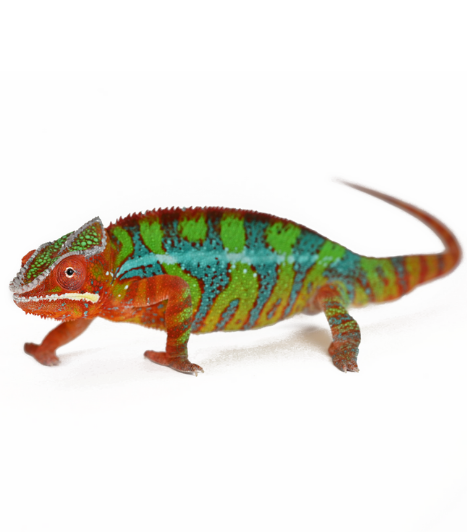
Kenny
AdvancedKenny really looks like a sad clown. He is very good-natured but can have moments being a drama king if handled!
Nov 2020
Panther Chameleon (Furcifer pardalis)
eastern and northern parts of Madagascar
They can change their colors as quickly as a minute or two. Their color change is due to temperature fluctuations, mood, and lighting.
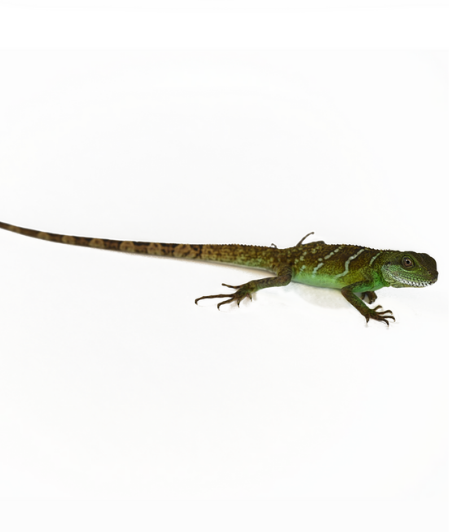
Ming
AdvancedMing is a somewhat dramatic little boy. He’s skittish and prefers his alone time. In fact, Ming sightings can be rare and if you do see him, he’s away in a flash!
Sep 2020
Chinese Water Dragon (Physignathus cocincinus)
Thailand, Vietnam, Cambodia, Laos, Burma, and southern China (rainforest or swamp riverbanks)
Excellent climbers, they can drop into water and stay under for up to 25 minutes. They can grow up to 3ft. long including their tail.
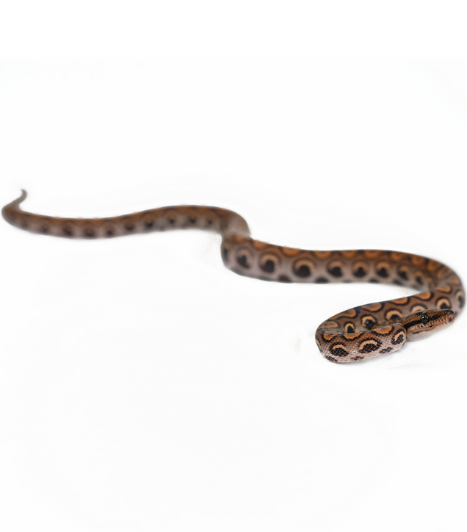
Minnie
AdvancedMinnie can be a sweet and curious little girl but a bit nippy when she wakes up in the morning – understandable for many of us! She has a unique marking that looks like Minnie Mouse – hence her name!
May 2021
Brazilian Rainbow Boa (Epicrates cenchria)
Amazon River Basin (humid woodlands)
Terrestrial snakes that have an iridescent holographic sheen that refracts light. Females can grow up to 7ft. long.
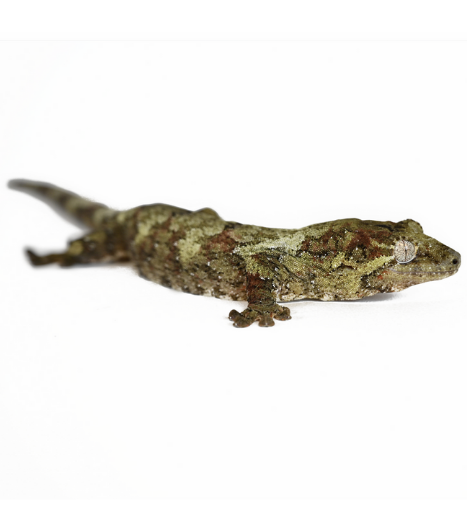
Ollie
AdvancedOllie could be in the reptile Olympics as a long jumper! He likes to jump around and away from us and is a very elusive little boy!
Oct 2019
Chahoua Gecko (Mniarogekko chahoua)
southern New Caledonia (rainforest canopies)
They are also known as the Mossy Prehensile Tailed Gecko. They easily blend in as their scales look exactly like the moss they live around.
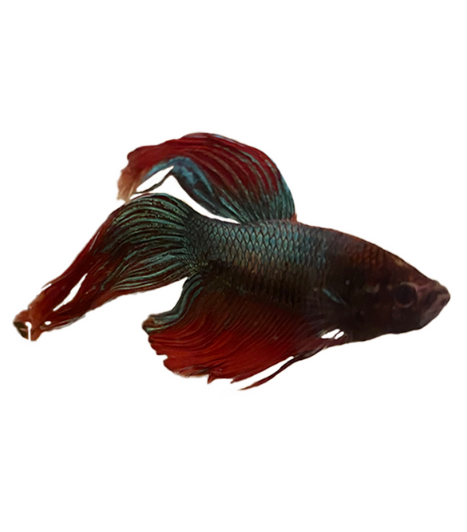
Pat
Beginner/IntermediatePat is very inquisitive, and he loves exploring his aquarium and the plants that surround him. He lives with his buddy, Bob the Sweet Potato, our office vegetable.
Aug 2018
Betta Fish (Betta splendens)
Asia (shallow water of rice paddies, ponds, and slow-moving streams)
Surprisingly intelligent fish, the Betta can recognize its owners and even do tricks. They should be kept in an aquarium rather than a bowl.
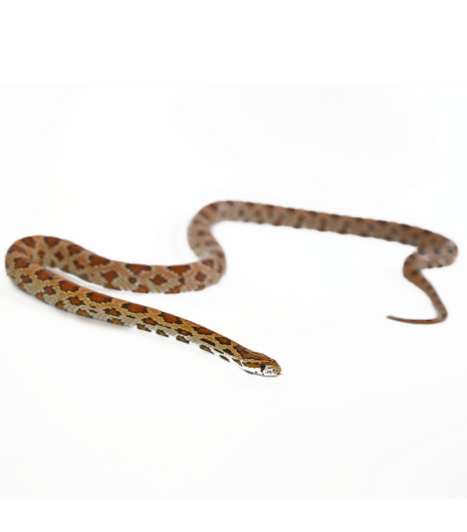
Pheonix
BeginnerPhoenix is very curious and inquisitive. She’s always wondering what’s going on around her and who is doing what.
Unknown
Corn Snake (Pantherophis guttatus)
Southeastern United States, New Jersey south to Florida and west to Louisiana and Kentucky
Get their name from the patterns on their scales that resemble colorful ornamental corn
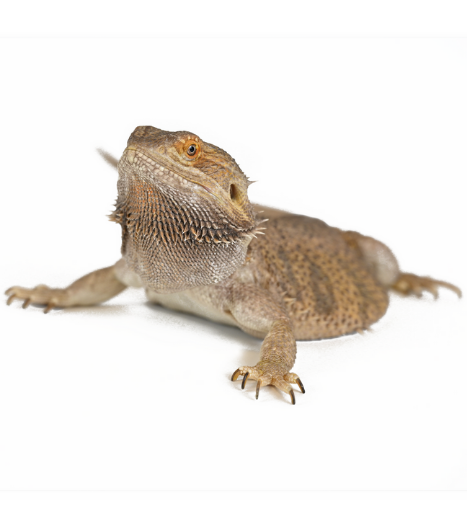
Reiki
Beginner/IntermediateLike her brother Chi, Reiki is an extremely sweet and lovable little beardie. She loves to be around people almost as much as she likes a good salad!
Aug 2016
Bearded Dragon (Pogona vitticeps)
inland Australia (arid, rocky, semi-desert regions and the arid open woodlands)
Named bearded because of the extension of skin on their throats. They can puff out the skin and turn it black when they are feeling territorial or excited for some other reason.
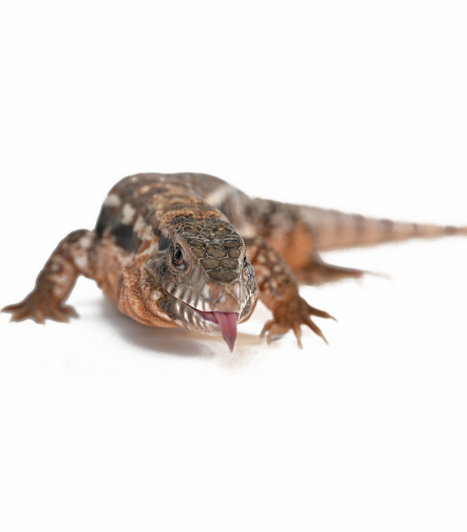
Rosie
AdvancedRosie is a very smart little girl and extremely independent. She knows how to get what she wants – especially blueberries!
Jul 2020
Red Tegu (Salvator rufescens)
Western Argentina, Bolivia, Paraguay (tropical rainforest, woodlands, savannas, and semi-desert locations)
grows up to 4.5ft. long; highly intelligent; trainable with patience and effort
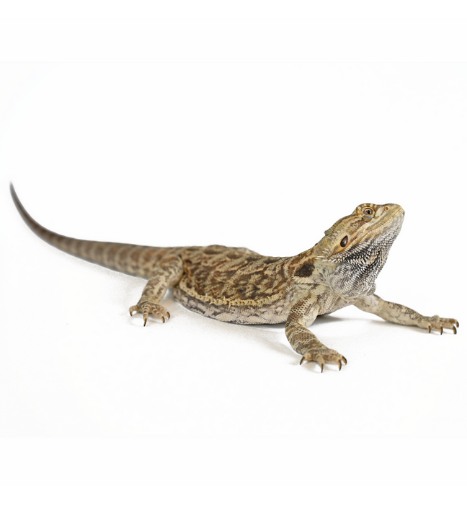
Tai
Beginner/IntermediateTai is our bold little girl, always wanting everyone around her to know she is there. She is extremely food motivated and sometimes can mistake Kasey’s fingers for food!
Jul 2018
Bearded Dragon (Pogona vitticeps)
inland Australia (arid, rocky, semi-desert regions and the arid open woodlands)
Named bearded because of the extension of skin on their throats. They can puff out the skin and turn it black when they are feeling territorial or excited for some other reason.
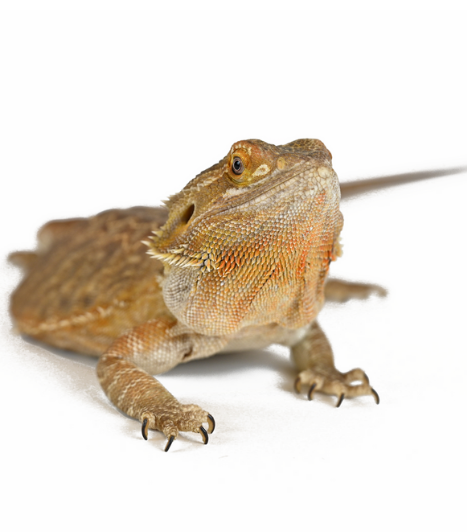
Zoe
Beginner/IntermediateZoe is your prototypical beardie. She is sweet and docile, can be stinky, and gives a great “judgy” face!
Aug 2017
Bearded Dragon (Pogona vitticeps)
inland Australia (arid, rocky, semi-desert regions and the arid open woodlands)
Named bearded because of the extension of skin on their throats. They can puff out the skin and turn it black when they are feeling territorial or excited for some other reason.
 Log in
Log in